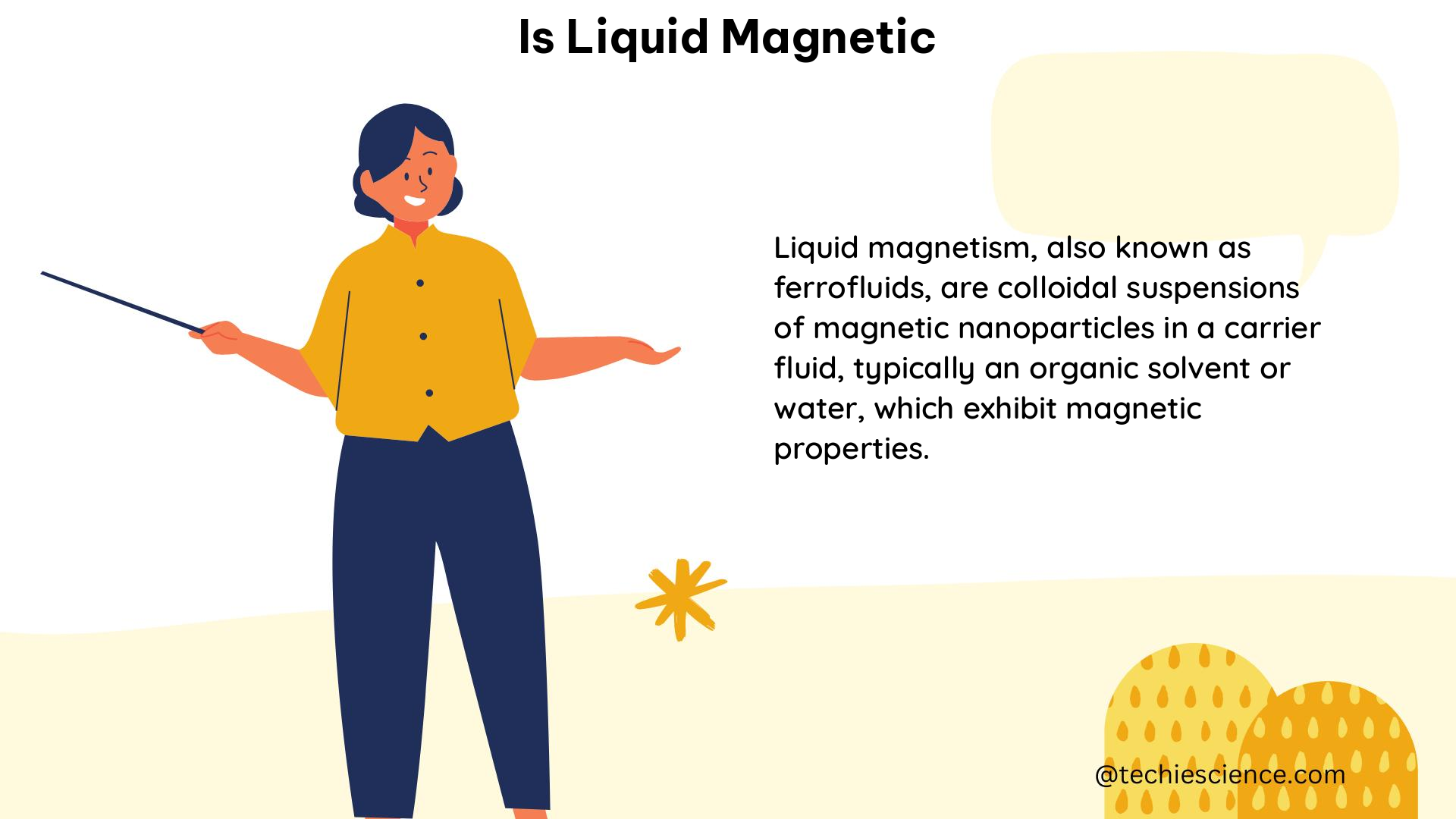Liquid magnetic materials, also known as magnetic liquids or ferrofluids, are a unique class of materials that exhibit strong magnetic properties while behaving like ordinary liquids. These materials are created by dispersing fine magnetic particles, typically made of iron oxide or other magnetic materials, into a carrier liquid such as oil or water. The resulting colloidal dispersion exhibits remarkable properties that make it a valuable tool in various applications, from engineering to medicine.
Understanding the Magnetic Properties of Liquid Magnetic Materials
The magnetic properties of liquid magnetic materials are primarily determined by the size, shape, and concentration of the magnetic particles suspended within the carrier liquid. These particles are typically on the nanoscale, ranging from 10 to 100 nanometers in diameter, and are coated with a surfactant to prevent agglomeration and ensure a stable suspension.
The magnetic behavior of these materials can be described using the following key concepts:
Magnetization and Magnetic Susceptibility
The magnetization (M) of a liquid magnetic material is the magnetic moment per unit volume, and it is directly proportional to the applied magnetic field (H) through the magnetic susceptibility (χ) of the material. This relationship is expressed by the equation:
M = χ × H
The magnetic susceptibility (χ) is a dimensionless quantity that represents the degree to which a material can be magnetized in response to an applied magnetic field. Liquid magnetic materials typically have a high magnetic susceptibility, which allows them to be easily manipulated and controlled by external magnetic fields.
Superparamagnetism
The small size of the magnetic particles in liquid magnetic materials often leads to a phenomenon called superparamagnetism. In this state, the magnetic moments of the individual particles can spontaneously flip direction due to thermal energy, resulting in a net zero magnetization in the absence of an applied magnetic field. However, when an external magnetic field is applied, the magnetic moments of the particles align with the field, leading to a strong magnetization.
Viscosity and Magnetoviscosity
The viscosity of a liquid magnetic material is an important property that can be influenced by the presence of the magnetic particles. As the magnetic field is applied, the particles can align and form chain-like structures, increasing the overall viscosity of the liquid. This phenomenon is known as magnetoviscosity, and it can be used to control the flow and behavior of the liquid magnetic material.
Measurement Techniques for Liquid Magnetic Materials

To characterize the magnetic properties of liquid magnetic materials, various measurement techniques can be employed, including:
Magnetometry
Magnetometry is a technique that uses a magnetometer to measure the changes in the Earth’s magnetic field caused by the presence of the magnetic particles in the liquid. By passing the magnetometer over the surface of the liquid, researchers can create a contour map that displays the magnetism of the survey area and identifies potential targets based on steep gradients or rapid changes in magnetism.
Magnetic Susceptibility Measurements
Magnetic susceptibility measurements involve applying an external magnetic field to the liquid magnetic material and measuring the degree to which the material is magnetized in response. This technique can be used to determine the magnetic identity of the material, whether it is paramagnetic or diamagnetic, and to detect the presence or absence of magnetic ordering or freezing transitions.
Rheological Measurements
Rheological measurements, which focus on the flow and deformation of the liquid magnetic material, can provide insights into the viscosity and magnetoviscosity of the material. These measurements can be performed using specialized rheometers or viscometers, and they can help researchers understand how the magnetic particles interact with the carrier liquid and how the material’s behavior changes under the influence of an external magnetic field.
Applications of Liquid Magnetic Materials
Liquid magnetic materials have a wide range of applications due to their unique properties and the ability to control their behavior using external magnetic fields. Some of the key applications include:
-
Sealing and Damping: The magnetoviscosity of liquid magnetic materials can be used to create effective seals and damping mechanisms in various mechanical systems, such as in automotive and aerospace industries.
-
Biomedical Applications: Liquid magnetic materials can be used in targeted drug delivery, cancer treatment, and magnetic resonance imaging (MRI) contrast enhancement due to their ability to be manipulated by magnetic fields.
-
Sensors and Actuators: The magnetic properties of liquid magnetic materials can be exploited in the development of sensors and actuators, such as in the creation of magnetic fluid-based switches and valves.
-
Heat Transfer and Cooling: Liquid magnetic materials can be used as efficient heat transfer fluids in various cooling applications, as the magnetic particles can enhance the thermal conductivity of the liquid.
-
Optical Devices: The optical properties of liquid magnetic materials can be tuned by applying magnetic fields, making them useful in the development of adaptive optics and optical shutters.
-
Environmental Remediation: Liquid magnetic materials can be used to remove contaminants from water or soil by magnetically separating the particles from the liquid or soil matrix.
Conclusion
Liquid magnetic materials are a fascinating class of materials that combine the properties of liquids and magnets, opening up a wide range of applications in various fields. By understanding the underlying principles of their magnetic behavior, researchers and engineers can continue to push the boundaries of what is possible with these unique materials.
References:
- NOAA Office of Ocean Exploration and Research. (n.d.). Magnetometer. Retrieved from https://oceanexplorer.noaa.gov/technology/magnetometer/magnetometer.html
- Apex Magnets. (2022, March 21). Evaluating Magnetism in Different Liquids. Retrieved from https://www.apexmagnets.com/news-how-tos/magnetic-science-fair-projects-part-3-evaluating-magnetism-in-different-liquids/
- Wang, Z., Liu, Y., & Zhang, Z. (2003). Magnetic Liquids. In Handbook of Nanophase and Nanostructured Materials (pp. 587-596). Springer, Boston, MA.
- Tutorial: a beginner’s guide to interpreting magnetic susceptibility measurements. (2022, April 19). Retrieved from https://www.nature.com/articles/s42005-022-00853-y
- Environmental Geophysics: The Magnetic Method. (n.d.). Retrieved from https://www.epa.gov/environmental-geophysics/magnetic-method

Hi,
I am Megha B R, I have completed my Post-Graduation in Solid State Physics and pursuing B. Ed. I am a Physics enthusiast. As an Academic writer, my goal is to reach the readers in a simplified manner through my articles.
Let’s connect through LinkedIn-